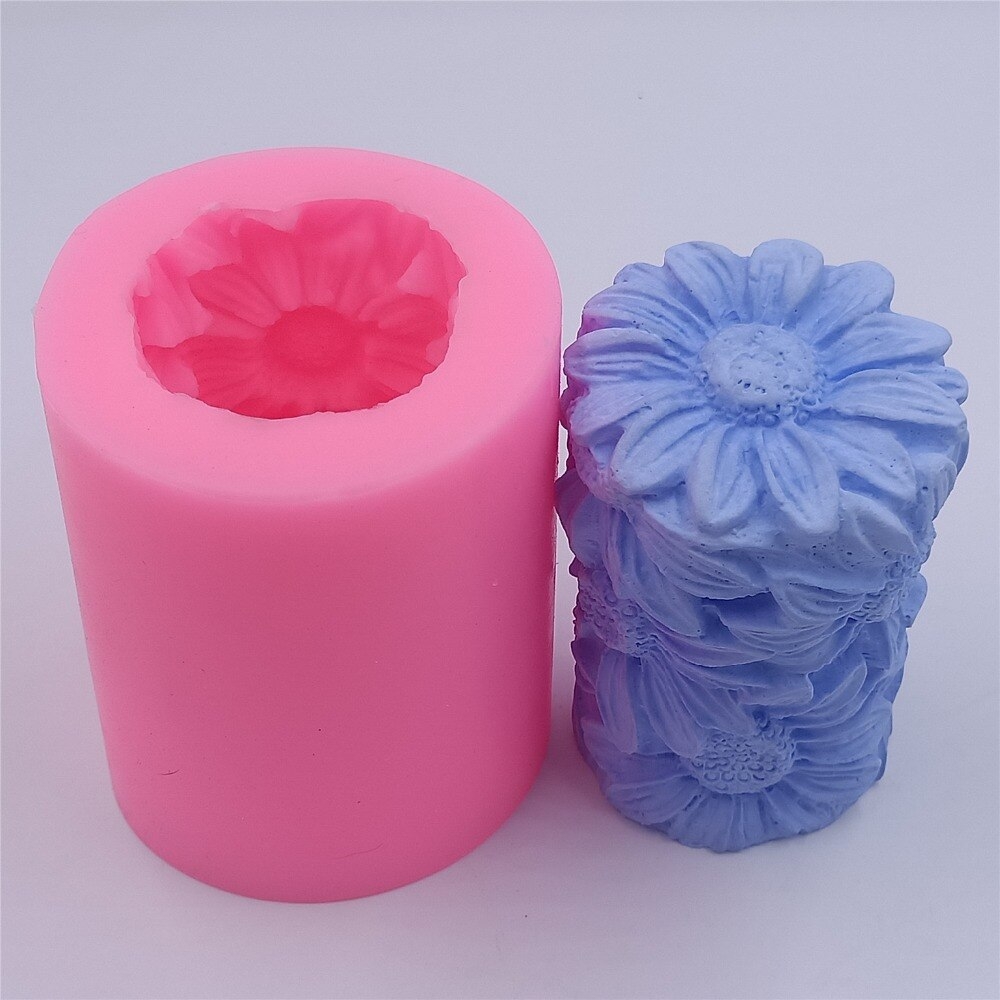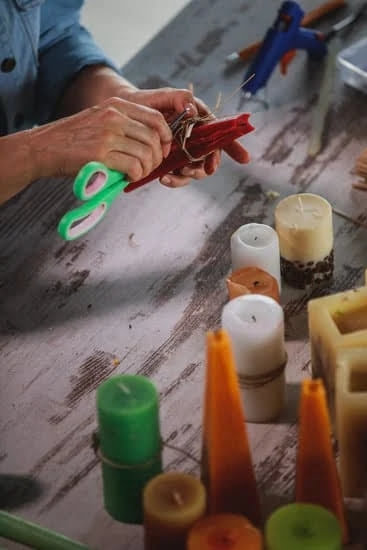Candle making can be a rewarding hobby, allowing you to create beautiful and fragrant candles to enjoy or gift to others. However, one common issue that many candle makers face is the formation of sinkholes in their creations.
These unsightly depressions can detract from the overall appearance of the candle and affect its burn time. In this article, we will explore how to avoid sinkholes in candle making, providing you with valuable tips and techniques to keep your candles looking smooth and flawless.
Sinkholes in candles typically occur during the cooling process when uneven temperatures cause the wax to contract, forming cavities within the candle. Understanding the causes of sinkholes is key to preventing them in your own candle making endeavors. Factors such as improper wax temperature, poor wick selection, additives, and fragrances can all contribute to sinkhole formation. By addressing these issues proactively, you can minimize the risk of encountering sinkholes in your finished candles.
One crucial aspect of avoiding sinkholes in candle making is maintaining proper wax temperature throughout the entire process. Temperature fluctuations can lead to uneven cooling and result in sinkholes.
Choosing the right wax for your specific project and ensuring it is melted and poured at the correct temperature are essential steps in creating high-quality candles without imperfections. Additionally, selecting the appropriate wick size for your container or mold can help promote even burning and reduce the likelihood of sinkhole development.
Understanding the Causes of Sinkholes in Candle Making
Sinkholes in candle making can be frustrating and disappointing, but with the right knowledge and techniques, they can be easily avoided. One of the main causes of sinkholes in candles is improper wax temperature.
When the wax is not heated to the correct temperature, it may not properly adhere to the container or mix with additives, leading to sinkholes. To avoid this issue, it is crucial to use a reliable thermometer and follow the recommended heating instructions for your specific type of wax.
Another factor that contributes to sinkhole formation in candles is the choice of wick. Using a wick that is too large for the container can cause uneven burning and lead to sinkholes in the center of the candle. It’s important to select a wick size that is appropriate for the diameter of your container and consider using wicks with a coreless design, which can help prevent sinking.
Additionally, fragrances and additives play a role in sinkhole formation as well. Some fragrances and additives can affect the way wax hardens and lead to sinkholes if not properly incorporated into the mixture. To avoid this issue, make sure to thoroughly mix any fragrances or additives according to manufacturer guidelines before pouring the wax into the container.
| Causes of Sinkholes | How to Avoid |
|---|---|
| Improper wax temperature | Use a reliable thermometer and follow heating instructions |
| Inappropriate wick size | Select a wick suitable for container diameter |
| Incorrect mixing of fragrances/additives | Thoroughly mix according to manufacturer guidelines |
Importance of Proper Wax Temperature in Candle Making
When it comes to candle making, one of the key factors that can lead to the formation of sinkholes is the temperature at which you pour your wax. Understanding the importance of maintaining the proper wax temperature throughout the candle-making process is crucial in avoiding sinkholes and creating high-quality candles. Here, we will delve into why proper wax temperature matters and how you can ensure that your candles turn out smooth and flawless.
Why Wax Temperature Matters
The temperature at which you pour your wax plays a significant role in preventing sinkholes in your candles. If the wax is too hot when poured, it can cause rapid cooling and solidification, leading to uneven surfaces and unsightly sinkholes.
On the other hand, pouring wax that is too cold can result in poor adhesion between layers, causing separation and potential sinkhole formation as the candle cures. Maintaining the correct wax temperature throughout the entire process ensures a smooth and even finish without any imperfections.
Tips for Controlling Wax Temperature
To avoid sinkholes in candle making, it’s essential to pay close attention to your wax temperatures at every stage of the process. Use a reliable thermometer to monitor the temperature of your melted wax before adding fragrance oils or additives, as different types of waxes have specific melting and pouring temperatures.
Additionally, consider using a double boiler or a dedicated wax melting pot to maintain consistent heat levels and prevent overheating. By carefully controlling your wax temperature from melting to pouring, you can achieve professional-looking candles free from sinkholes or blemishes.
Choosing the Right Wick for Sinkhole Prevention
When it comes to making candles, choosing the right wick is a crucial step in preventing sinkholes. Sinkholes are common issues that can occur during the candle making process, resulting in uneven surfaces and unsightly holes in your finished product. By selecting the appropriate wick for your candle, you can minimize the risk of sinkholes and create beautiful, high-quality candles.
To avoid sinkholes in candle making, here are some tips for choosing the right wick:
- Consider the size and diameter of your container: The size and diameter of your container will determine the length and thickness of the wick you need. A wick that is too thick may burn too hot and fast, leading to sinkholes, while a wick that is too thin may not provide enough heat to melt the wax evenly.
- Choose the correct type of wick: There are various types of wicks available, such as cotton, wood, or zinc core wicks. Each type of wick burns at a different rate and temperature, so selecting the one that best suits your wax formula is essential for avoiding sinkholes.
- Test different wicks: Before settling on a specific type of wick, it’s essential to conduct test burns with various options to determine which one performs best with your chosen wax blend. Testing different wicks will help you find the perfect match for optimal burn performance and sinkhole prevention.
By taking these considerations into account when choosing a wick for your candles, you can effectively prevent sinkholes and ensure a successful candle-making process. Remember that testing and experimentation are key in determining which wick will work best with your unique wax blend and container size. With the right wick selection, you can enjoy creating beautiful candles without worrying about unsightly sinkholes affecting their quality.
Role of Fragrances and Additives in Sinkhole Formation
When it comes to candle making, adding fragrances and additives can greatly enhance the final product. However, it’s important to understand that these components can also play a role in sinkhole formation if not used correctly. In this section, we will delve into how fragrances and additives can contribute to sinkholes in candles and provide tips on how to avoid this issue.
Impact of Fragrances on Sinkhole Formation
Fragrances are a common addition to candles, providing pleasant scents when lit. However, certain types of fragrances can impact the wax’s ability to cool evenly, leading to the formation of sinkholes.
Fragrance oils with high levels of alcohol or water content can cause the surrounding wax to cool at different rates, resulting in unsightly sinkholes in the center of the candle. To avoid this issue, opt for fragrance oils specifically formulated for candle making and check their compatibility with the type of wax being used.
Effects of Additives on Sinkhole Prevention
Additives such as colorants and UV inhibitors can also influence the occurrence of sinkholes in candles. While these components add visual appeal and functionality to candles, they may affect the overall composition of the wax. Some additives may increase the risk of sinkholes by speeding up or slowing down the cooling process unevenly.
To prevent sinkholes, carefully consider the type and amount of additives being incorporated into your candle recipe. It is essential to follow proper measurements and guidelines provided by reputable sources to ensure a smooth burning surface without any sinkholes.
Best Practices for Using Fragrances and Additives
To avoid sinkholes in candle making caused by fragrances and additives, it is crucial to follow best practices throughout the entire process. This includes properly measuring and incorporating fragrances at recommended levels, as well as testing new additives in small batches before mass production.
Additionally, monitoring the temperature of your wax during fragrance or additive additions can help maintain consistency and prevent uneven cooling that leads to sinkholes. By paying close attention to these details and taking necessary precautions, you can create beautifully scented candles without worrying about unsightly sinkholes ruining your final product.
Proper Pouring Techniques to Avoid Sinkholes
When it comes to candle making, one of the key factors in avoiding sinkholes is mastering the art of proper pouring techniques. The way you pour the melted wax into the container can greatly impact the final outcome of your candle. To avoid sinkholes, it is essential to pour the wax at the right temperature and in a smooth and steady manner.
First and foremost, make sure that your wax is at the appropriate temperature for pouring. If the wax is too hot, it can cause sinkholes as it cools down too quickly. On the other hand, if the wax is too cold, it may not fill all parts of the container evenly, leading to an uneven surface. Use a thermometer to monitor the wax temperature closely and ensure that it is within the recommended range for pouring.
Additionally, when pouring the wax into the container, do so slowly and steadily. Avoid pouring too quickly or from too high up, as this can create air bubbles in the wax which may later collapse and result in sinkholes. Instead, pour in a circular motion from a moderate height to allow the wax to settle evenly without trapping air pockets. Mastering these proper pouring techniques is crucial in producing high-quality candles without any unsightly sinkholes.
| Important Point | Details |
|---|---|
| Proper Wax Temperature | Maintain correct temperature for even filling |
| Smooth and Steady Pouring | Avoid creating air bubbles which lead to sinkholes |
Cooling and Curing Tips for Sinkhole Prevention
Sinkholes can be a common issue that candle makers face, leading to an unsightly finish on their final products. However, there are several steps you can take to prevent sinkholes from forming during the cooling and curing process of your candles. By following these tips, you can ensure a smooth and flawless finish to your homemade candles.
To avoid sinkholes in candle making, it is crucial to pay attention to the cooling and curing process after pouring your candles. Here are some important tips to consider:
- Allow your candles to cool slowly and evenly at room temperature.
- Avoid placing your candles in areas with drafts or fluctuations in temperature.
- Consider using a heat gun or hairdryer on low heat settings to gently warm the tops of your candles if sinkholes start to form.
Proper curing of your candles is equally important in preventing sinkholes. Make sure to let your candles cure for the recommended time before burning them. Here are some additional tips for proper cooling and curing techniques:
- Store your cured candles in a cool, dark place away from direct sunlight.
- Avoid stacking or overcrowding cured candles as it may lead to deformation and sinkholes.
- Check periodically for any signs of sinkholes during the curing process and take corrective measures if needed.
By following these cooling and curing tips for sinkhole prevention, you can minimize the risk of encountering sinkhole issues in your candle making process and achieve professional-looking results every time. Remember that patience and attention to detail are key when it comes to creating beautiful, high-quality candles without any imperfections.
Troubleshooting Sinkholes
Sinkholes in candle making can be frustrating for any crafter, but they are not impossible to fix and prevent. Understanding the causes of sinkholes is essential in troubleshooting and avoiding them in future batches of candles. One common reason for sinkholes is improper wax temperature during the pouring process. To avoid sinkholes, it is crucial to ensure that the wax is at the optimal temperature before pouring into the container.
To avoid sinkholes in candle making, choosing the right wick is also critical. A wick that is too large or too small for the container can lead to uneven burning and potential sinkhole formation. It is important to select a wick size that matches the diameter of the container to promote an even burn and prevent sinkholes from forming.
Another factor that can contribute to sinkholes in candles is the use of fragrances and additives. Certain fragrances and additives can affect the behavior of the wax, leading to sinkhole formation.
It is advisable to test different fragrances and additives in small batches before making larger quantities of candles to identify any potential issues and make adjustments accordingly. By paying attention to these key factors – wax temperature, wick selection, and fragrance/additive use – crafters can troubleshoot existing sinkholes in their candles and prevent them from occurring in future creations.
Final Thoughts
In conclusion, mastering the art of candle making involves more than just pouring wax into a mold. It requires an understanding of the potential pitfalls that can arise, such as sinkholes. By following the tips and techniques outlined in this article, you can effectively avoid sinkholes in your candle making process.
One of the key factors in preventing sinkholes is maintaining the proper wax temperature throughout the melting and pouring stages. Ensuring that your wax is at the optimal temperature will result in a smooth, even finish without any unsightly holes in your candles. Additionally, selecting the right wick for your candles is crucial to prevent sinkholes. The size and material of the wick play a significant role in how the candle burns and how it prevents sinkholes from forming.
Furthermore, paying attention to fragrances and additives used in your candles can also impact the formation of sinkholes. Some additives may alter the composition of the wax, leading to inconsistencies in cooling and curing.
Finally, implementing proper pouring techniques and allowing sufficient time for your candles to cool and cure can make a significant difference in preventing sinkholes. By incorporating these tips into your candle making routine, you can create beautiful, high-quality candles that are free from imperfections like sinkholes.
Frequently Asked Questions
How Do You Prevent Candle Sinkholes?
To prevent candle sinkholes, it’s crucial to cool the candles at room temperature rather than in a cold environment. Avoid using high-temperature molds that can cause uneven cooling and lead to sinkholes. Adding stearic acid to your wax mixture can also help prevent sinkholes.
What Causes Homemade Candles to Sink in the Middle?
Homemade candles may sink in the middle due to various reasons such as rapid cooling, improper wick size, or not using additives like stearic acid. If the wax cools too quickly, it can create a hole in the center of the candle as it contracts.
How Do You Make Candles That Don’t Sink in the Middle?
Making candles that don’t sink in the middle involves several key steps. Firstly, choose the right wick size for your candle diameter to ensure proper and even burning.
Secondly, allow your candles to cool slowly at room temperature to prevent any uneven shrinkage that can result in sinkholes. Lastly, adding stearic acid or vybar into your wax blend can improve the overall structure and quality of your candles, reducing the likelihood of sinkholes forming.

Welcome to my candle making blog! In this blog, I will be sharing my tips and tricks for making candles. I will also be sharing some of my favorite recipes.





